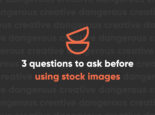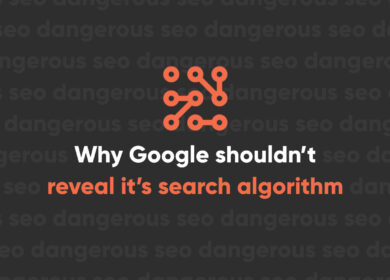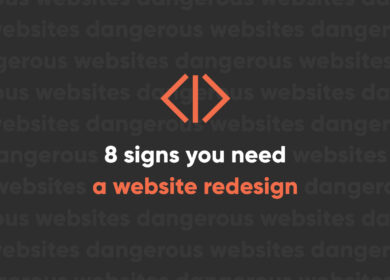
How Do I Calculate Conversion Rate on My Website?
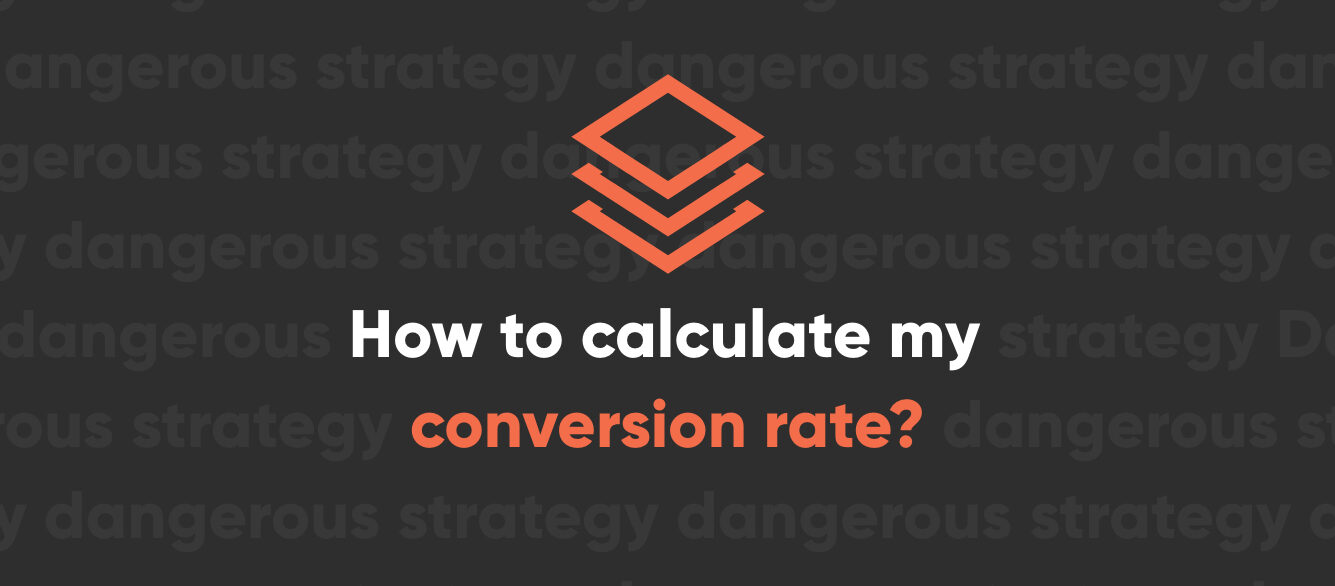
Conversion rate may seem like one of the best ways to determine the overall quality of your website. According to Google Analytics, calculating your conversion rate is really simple. Take the number of goal completions and divide it by the number of sessions. Boom! You have a conversion rate.
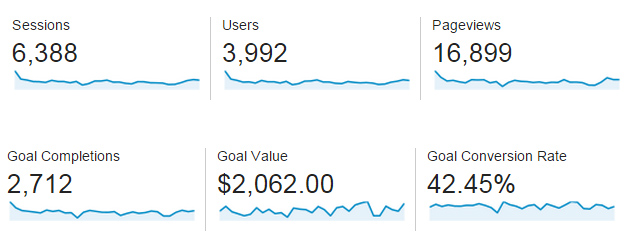
Would you look at that? Over 40% of people convert on our site! Now that’s pretty darn good. Any business owner should be happy with that number. Our website and business must be awesome. Time to celebrate!

The truth about your Google Analytics conversion rate
Stop celebrating. We need to make a couple things clear before we move on:
- Your Google Analytics conversion rate does not tell you what percentage of people converted.
- Your Google Analytics conversion rate does not tell you what percentage of sessions led to a conversion.
Let’s explain this one more time. Your conversion rate in Google Analytics simply divides the number of "conversions" by the number of sessions.

You know what? That’s actually a pretty stupid way to calculate your conversion rate. Here’s why:
- The total number of goal completions is not necessarily indicative of total conversions
- Not every session is a potential conversion
- Users with multiple sessions may only convert once, thereby reducing your overall conversion rate
- Sessions with multiple goal completions may falsely increase your conversion rate
Wait. How can a goal completion not be a conversion? Well, what if your lead generation site also has engagement goals based on document downloads or number of pages viewed? Are these really conversions? After all, you’re trying to collect leads.
Fixing your conversion rate
So an easy fix is to forget about those so-called engagement goals and only set up our true leads. Well, here’s what might happen when you do that:

What? Only 7% of our sessions led to a conversion? Now I’m sad. I liked that 42% number much better. My site must be pretty lousy.
Before you get too down on yourself, let’s think a little more about conversion rate. Using these basic configurations for conversion rate most likely results in one of two possible scenarios:
- Your conversion rate is higher than it really is (as in the first example)
- Your conversion rate is lower than it really is (as in the second example)
There has to be a better way to do this.
A better way to determine conversion rate
Your conversion rate isn’t really your total number of goal completions divided by your total sessions. Such a calculation doesn’t tell you much about your site, and it certainly won’t help you make data-driven changes to improve your website.
Rather than using this over-generalized version of conversion rate, you need to break it down. There are many different ways you can break down the data to establish more meaningful conversion rates. Here are a few ideas:
-
Conversion Rate Based on Target Audience
Let’s say you have a web design business in Minneapolis. You are only interested in working with businesses located within 50 miles of Minneapolis. You can’t very well calculate your conversion rate based on all of your sessions, especially if you write outstanding blog posts that bring people from all over the world to your website. So rather than looking at all your sessions, you should only be looking at your sessions from users in your target radius. You can do this easily by creating a segment that only includes users within that area. Once you’ve determined the number of users from your target area, you can see how well your site converts for those visitors you want to be your customers. When you weed out all those other visitors, you’re going to get a much more meaningful conversion rate.
-
Conversion Rate Based on Audience Interest
There’s a good chance that many of the people who land on your website aren’t actually interested in using your services. As mentioned above, there are all those people reading your awesome blog posts who may not need the service you provide. Rather than including all of these visitors, take a look at the ones who really seem interested in using your services. You can do this by creating a segment that only looks at users who visit service pages. Or maybe you can look at visitors who go to your contact page. From there, you can get a much better conversion rate.
-
Conversion Rate Based on Device Type
Another great way to break down your conversion rate is by device type. This can give you a lot of insight into how effective your website is on different devices. You may discover that very few of your mobile visitors convert, which could alert you of a major issue with your website. Now that’s data that can help you improve.
Okay, now let’s talk about ecommerce conversion rates
For an e-commerce website, conversion rate is supposedly even easier. You don’t need to worry about goal completions. Everything is based on sales, as it should be. So you take the number of transactions and divide it by the number of sessions. Boom! You have an e-commerce conversion rate that tells you how good your website is. Right?
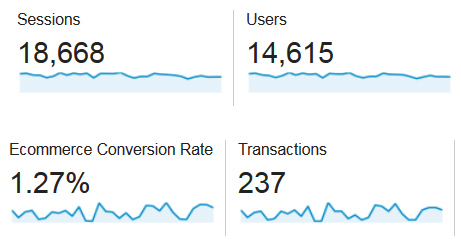
Ouch. Our e-commerce conversion rate is just a little over 1%. We must either need a new checkout process, a new website, or a completely new product.
Wrong. Once again, this is a terrible way to calculate your conversion rate. I’ve got news for you. Not every session is a potential sale. Take for example a past purchaser who came back for warranty or shipping information. That isn’t a potential sale. Or maybe you have a customer who is here to leave a product review. Once again, not really a potential sale. And there are probably dozens of other possibilities as well.
Finding meaningful ecommerce conversion rates
So how in the world do you figure out meaningful e-commerce conversion rates?
Here are my favorite e-commerce conversion rates to analyze:
- Product viewers to cart additions
- Product viewers to orders
- Cart additions to orders
- Checkouts to orders
These conversion rates can give you a lot of insight about your website. Knowing how many product viewers actually add a product to their cart or complete an order is much more important than knowing the ratio of transactions to sessions. After all, how are you going to increase that conversion rate? By targeting those users who bounce from your home page? Or by trying to improve your checkout process or product layouts for those customers actually interested in your products? I think you know the answer.
Conversion rate is a valuable metric, but only if we’re smart about it. If we oversimplify the data and treat all sessions and all goal completions as equals, then we’ll end up with numbers that don’t tell us much of anything.
This post is part of Internet Marketing Mysteries, a weekly column addressing actual client questions related to SEO, analytics, website best practices, and any other topic connected to internet marketing. Have a question you’d like to see tackled in a future post? Let us know in the comments.

Nate Tower
Nate Tower is the President of Perrill and has over 12 years of marketing and sales experience. During his career in digital marketing, Nate has demonstrated exceptional skills in strategic planning, creative ideation and execution. Nate's academic background includes a B.A. with a double major in English Language and Literature, Secondary Education, and a minor in Creative Writing from Washington University. He further expanded his expertise by completing the MBA Essentials program at Carlson Executive Education, University of Minnesota.
Nate holds multiple certifications from HubSpot and Google including Sales Hub Enterprise Implementation, Google Analytics for Power Users and Google Analytics 4. His unique blend of creative and analytical skills positions him as a leader in both the marketing and creative worlds. This, coupled with his passion for learning and educating, lends him the ability to make the complex accessible and the perplexing clear.
